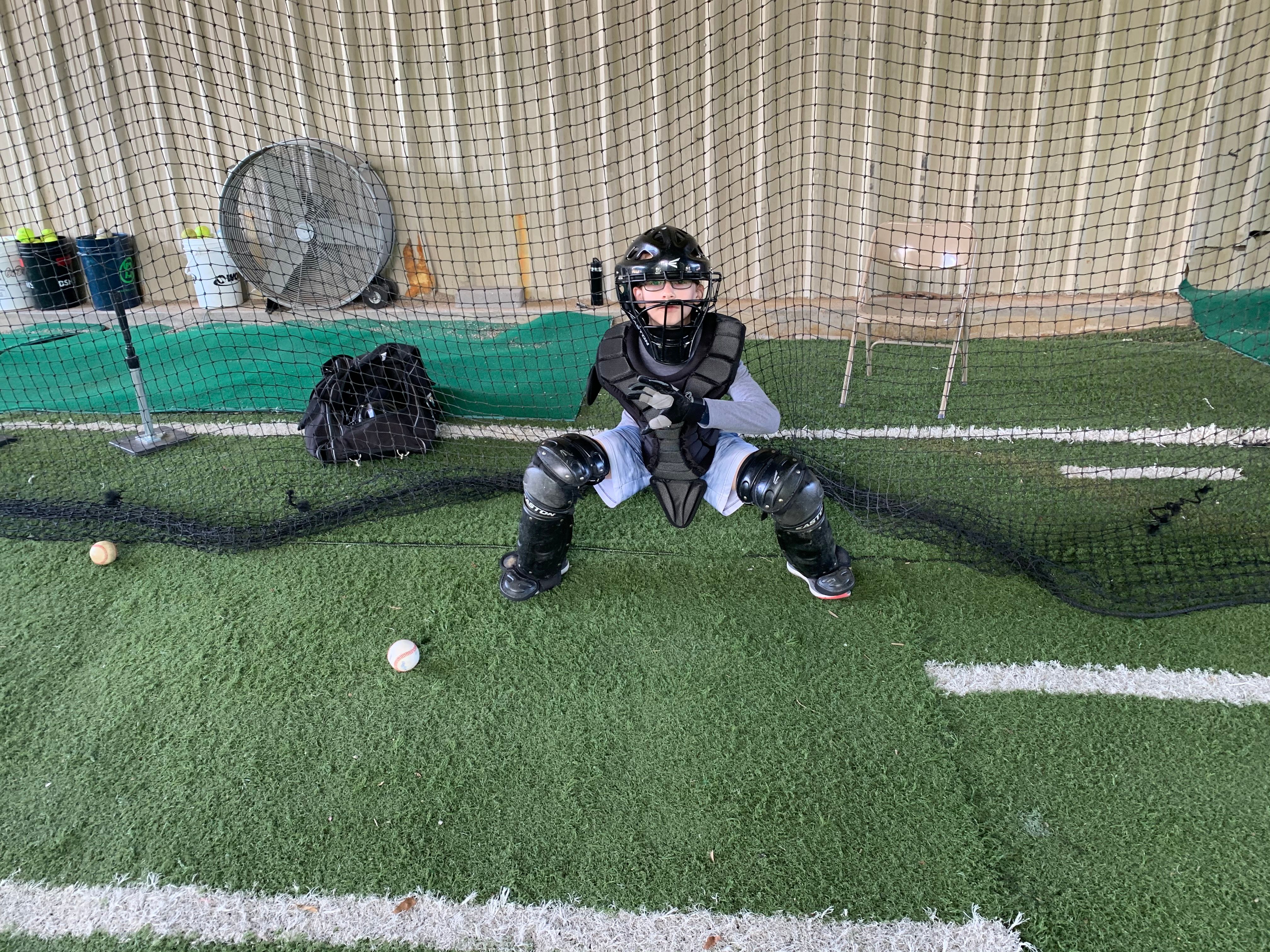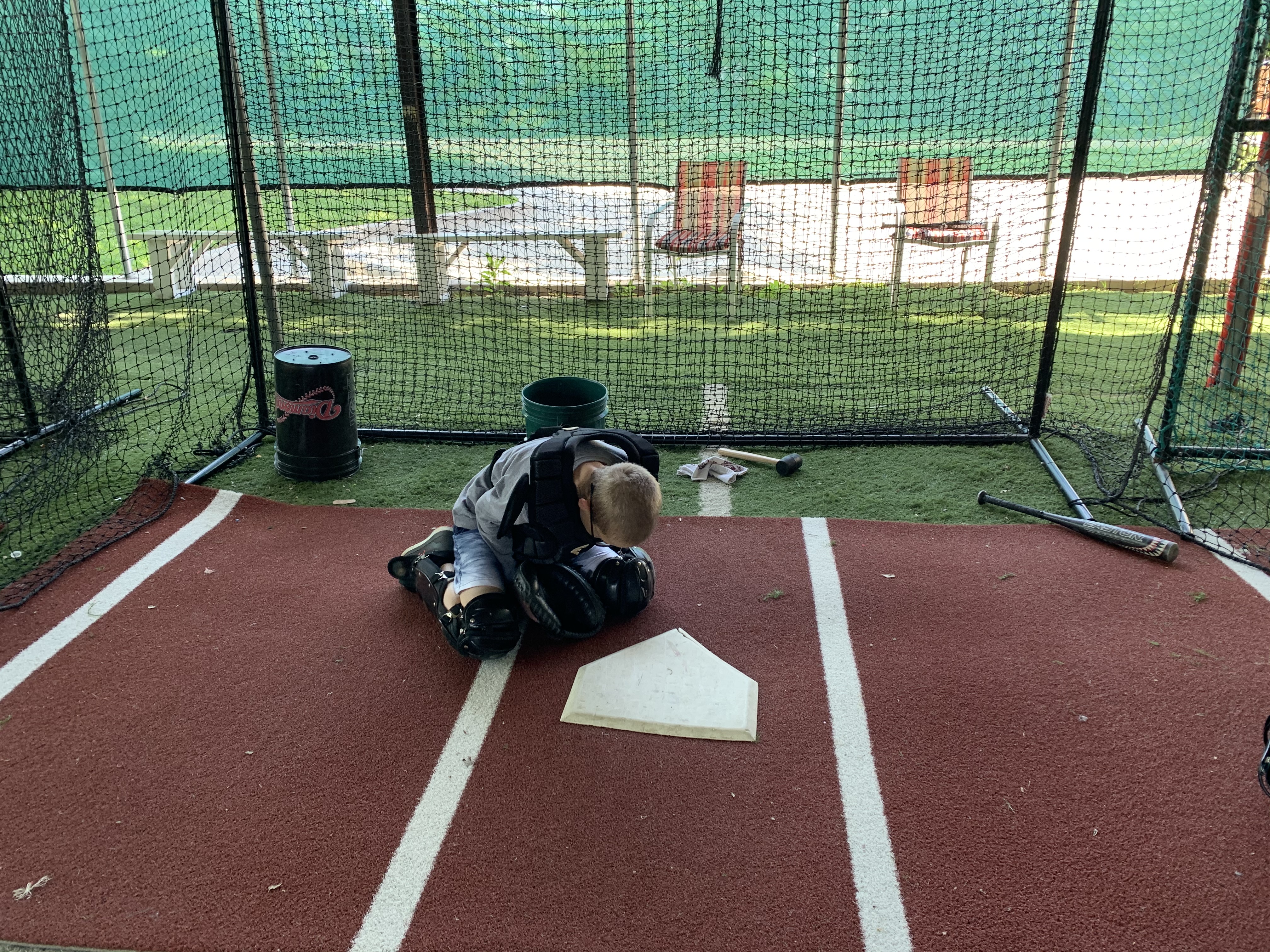The catcher’s position is critical at all levels of baseball. Even though we may not be preparing our youth for collegiate or professional careers, we would obviously prefer it if they could execute the fundamentals of the position. This article suggests some age-appropriate drills and progressions for youth catchers.
Your main goals for youth catchers to focus on would be – in no particular order – receiving the ball, blocking, and throwing. The forthcoming drills are meant to reinforce fundamentals, help them to feel important with the implementation of position-specific drills, and have fun! In each drill, stance, footwork, and how you want them catching/throwing needs to be reinforced. It’s not just about executing the drill a certain number of times. As coaches, we should always look for quality over quantity.
Receiving the Ball
Being able to catch the ball is an important skill for any catcher. Being able to ‘present’ it as a strike would be a future goal down the road.

Fast Hands: This drill helps to teach hand/eye coordination and work on the ability to catch the baseball.
• The catcher will set up behind home plate in a receiving stance.
• The coach will set up approximately six feet in front of home plate.
• The catcher will move into the receiving stance with their bare hand up and ready.
• The coach tosses baseballs to the catcher, who catches them and flips them to the side.
• This is intended to be a fast-paced drill, with the coach using both hands to toss baseballs to the catcher.
Fast Hands + Move: Continues to work on hand/eye coordination while helping to develop hip mobility and reaction time.
• Set up a ‘course’ that is approximately ten feet apart.
• The catcher will move into a full squat with their bare hand up ready to catch the ball.
• The coach will stand in front of the catcher.
• Staying low, the catcher will move to the side using a push/step movement pattern.
• As the catcher is moving to the side, the coach will toss baseballs to the catcher.
• The catcher will catch the ball and then toss it back to the coach.
• The catcher will move to one side, then to the other.
Dropped Third Strike: Reacting effectively in this situation requires practice for everyone involved.
• The catcher sets up behind home plate and moves into the receiving position.
• The catcher holds the baseball in his glove as if he had just caught it.
• The catcher then drops the baseball.
• The catcher must pick up the baseball, stand up, and throw it accurately to (preferably a live target) first base.
Dropped Third Strike with Baserunner: Adds a batter in the box and a first base coach.
• I like to run this drill by announcing “Strike one, strike two, strike three!”
• On “Strike three!” the catcher will drop the ball as the coach yells to the runner “go, go go!”
• This is a drill that allows for everything to be trained at once.
• Baserunning is trained, fielding is trained, and the catcher gets training as well.
• It is important to practice under pressure! Put something on the line for baserunners and catchers in these situations.
Blocking
Blocking requires a lot of repetition before it becomes a usable, in-game skill.

Positional blocking:
• The catcher sets up behind home plate and moves into their receiving stance.
• Drop down to block a pretend baseball right behind the plate (several times).
• The next step is to move to the catcher’s left side and block behind the plate on the 3B corner.
• The next step is block a ball behind the 1B corner of home plate.
 Around the Plate:
Around the Plate: Besides teaching blocking while tired, this is also a great warm up drill.
• Place a baseball on each corner of the plate.
• The catcher will set up behind the plate in their receiving stance.
• First, they will drop down and block behind the plate.
• Then they will rise up, push with their right leg and move/block behind the 3B corner (to their left).
• Move around the plate (clockwise) until all corners have been ‘blocked,’ then reverse directions and repeat, moving counter-clockwise.
Blocking Course:
• For this drill, set up four or five baseballs a few feet apart.
• The catcher sets up behind the first baseball into receiving stance, executes a block behind the first baseball and moves to the right behind the next baseball, all the way down the course.
Throwing Down
For these drills, the catcher begins in their ‘secondary’ receiving position for when there is a baserunner. They will then pop up and execute the throw to the correct base. Once the catcher can do this accurately, a baserunner is added, offering an opportunity to work on multiple facets of the game and practice with pressure.
Cage Simulation:
• The catcher sets up behind home plate, coach tosses him a ball. He then pops up and throws the baseball straight down to simulate a throw to second base.
• Home plate can be angled to the right or left to simulate a throw to first or third base.
Weighted Balls: Once catchers can execute the throw downs accurately, you can add weighted baseballs. This should only be done when catchers are able to execute the movements with skill or it will reinforce bad habits.
Passed Ball
Being able to retrieve passed balls can make a difference between getting an out at the plate or allowing a run.
 Sliding:
Sliding:
• The catcher moves into the receiving position.
• The ball is tossed on the ground behind the catcher.
• The catcher needs to turn, locate the ball, and run toward it.
• As they approach the ball, the catcher should slide on the shin guards so that they end up next to the ball with their glove shoulder facing home plate
• They will pick up the ball and move into a position that is ready to throw the ball.
With Pitcher: This drill is executed exactly like the sliding drill with two differences. First, there is a pitcher that runs to home plate, yelling “one, one” if the ball is on the first base side, “three three” for third base side, or “straight back.” When the catcher retrieves the ball, he will flip it to the pitcher, who will put down the tag.
With Runner on Third: Finally, everything is put together with a baserunner on third base. Again, this lets us work on everything at the same time.
Youth baseball coaches have a lot to work on, no doubt. But so do coaches at every level of most any sport. This is an important age because it can be used to firmly establish good fundamentals. Even at this level, catchers can be taught to execute the movements with skill as opposed to being a glorified backstop. This will allow them to be an asset to their team and something that opponents have to account for.
John Cissik is head coach for both the 11U Pirates, Frisco Baseball and Softball Association and the Miracle League Cardinals, Frisco Miracle League, as well as a special education teacher at McKinney North High School (TX).